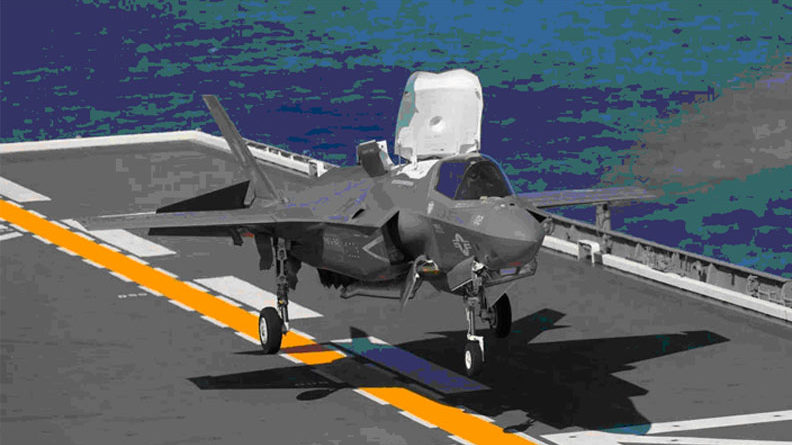Japan Is Converting Its 2 Biggest Warships Into Aircraft Carriers
08 Oct 2021
Japan is converting its 2 biggest warships into aircraft carriers, and US Marines are helping it train to use them

- This month, US Marine Corps F-35Bs landed on and took off aboard Japanese warship Izumo.
- It was the first time a fixed-wing aircraft has operated from a Japanese aircraft carrier in 75 years.
As China increases the size and capability of its military, Japan has responded by adapting its Self-Defense Force to meet what it sees as a growing threat.
Japan has created its first amphibious military unit since World War II and launched a new class of high-tech frigates, and it’s restructuring its tank force to be lighter and more mobile and building up its missile capabilities.
Perhaps the most eye-opening move, though, is the conversion of its two Izumo-class helicopter carriers into dedicated aircraft carriers.
On Sunday, two US Marine Corps F-35Bs landed on and took off from the deck of the Izumo, the lead ship of the class – the first time a fixed-wing aircraft has operated from a Japanese carrier in 75 years.
The test is just the first step toward Japan getting its first carriers since World War II.
Early adapter
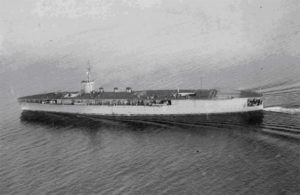
Japan has a long history with flattops, commissioning its first, Hōshō, in 1922.
Hōshō was the world’s first purpose-built carrier to enter service, beating HMS Hermes, which the British Royal Navy began constructing almost three years earlier.
Japan was one of the first countries to use carriers effectively. Their employment against China in the 1930s gave the Japanese considerable experience compared to their Western counterparts and led to better designs for Japanese carriers and carrier aircraft as well as high training standards.
By 1941, some of Japan’s carriers were widely considered to be the best in the world. The Japanese navy used coordinated formations of multiple carriers, which showed their strength at Pearl Harbor and then helped Japan dominate the Pacific for the first six months of the war.
But while Japan started the war with one of the best carrier forces in service, it couldn’t match the industrial might of the US, which built newer carriers and warships far more quickly and in much higher numbers.
By the end of the war, all the carriers Japan had in service had been sunk or damaged, and it lacked the manpower or resources to finish building the ones it had under construction.
Aircraft-carrying warships
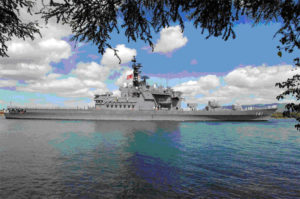
After the war, Japan adopted a pacifist constitution. As a result, the Japan Maritime Self Defense Force (JMSDF) never fielded carriers because of their traditionally offensive nature.
By the 1960s, however, the JMSDF had grown worried about the threat from increasingly sophisticated Soviet submarines and wanted ships capable of carrying helicopters for anti-submarine-warfare (ASW) operations.
The first of these ships were the two Haruna-class destroyers Haruna and Hiei. Commissioned in 1973 and 1974, respectively, they each had a large central hangar that carried three SH-3 Sea King and later SH-60K helicopters, and flew from a flight deck on the aft part of the ship.
In addition to the helicopters, the destroyers were armed with two Mk. 42 5-inch guns, two Phalanx close-in weapon systems, a single eight-barreled Sea Sparrow SAM launcher, an ASROC launcher with eight barrels, and two triple torpedo tubes.
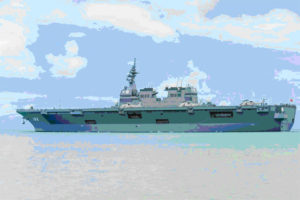
The Haruna-class was followed by the Shirane-class destroyers, Shirane and Kurama, which were commissioned in 1980 and 1981, respectively, and were similarly armed.
In 1998, the JMSDF commissioned the first of three Ōsumi-class tank landing ships. The Ōsumis have a flattop deck and can carry multiple helicopters and amphibious vehicles. While similar in appearance to amphibious assault ships, they are used primarily for transportation duties.
In 2009, the JMSDF commissioned the helicopter destroyer Hyūga, the first of its class. It has a 646-foot flattop deck and can carry up to 11 helicopters, mainly MCH-101s and SH-60Ks. It’s armed with 16 Mk 41 vertical launch system cells, two Phalanx close-in weapon systems, and two triple torpedo tubes.
A second Hyūga-class vessel, Ise, was commissioned in 2011. Both ships are tasked primarily with ASW missions, and are classified as “escort ships” by the JMSDF.
Japan’s biggest ships
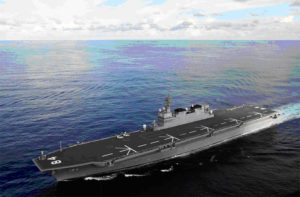
Hyūga and Ise were the JMSDF’s largest ships until Izumo, which was launched in 2013 and commissioned in 2015.
Izumo and its sister-ship, Kaga, are both 813 feet long, and, like the Hyūgas, were helicopter-carriers intended for ASW operations.
However, in 2018, after years of speculation, the Japanese government confirmed that it would convert the Izumo-class ships into aircraft carriers and that it would buy 42 F-35Bs with short-takeoff and vertical-landing capability.
It’s not clear how many aircraft each ship can deploy with, but the conversion may allow them to carry well over a dozen helicopters and fighter jets.
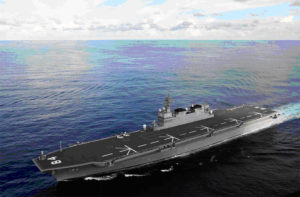
The first phase of modification for Izumo began in 2020 and was completed in July. The ship now has a distinctive yellow line similar to that on the US Navy’s America-class amphibious assault ships. Izumo’s deck was also given heat-resistant coating.
The second phase of modification is planned to start around early 2025 and will involve changing the bow from its current trapezoidal shape to one that is rectangular, as well as changes to the ship’s interior.
Kaga is planned to begin its first phase of modification around early 2022, and the work is expected to take 14 months.
Japan hopes to acquire its first 18 F-35Bs in 2023 or early 2024. They will be flown by Japan’s air force and be based at Nyutabaru Air Base in Kyushu, the southernmost of Japan’s four largest islands. The jets will embark on the carriers only in select situations.
More aircraft, more options
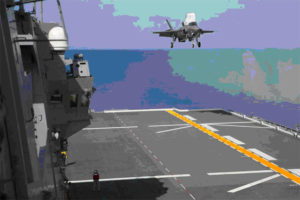
The decision to convert the ships into carriers was prompted by China. Beijing has adopted an aggressive foreign policy, particularly in dealing with territorial disputes, that has alarmed many of its neighbors.
In 2018, Japan accused China of engaging in “unilateral, coercive attempts to alter the status quo based on its own assertions that are incompatible with existing international order.”
Particularly worrying for Japan are China’s actions around the Senkaku Islands, a group of uninhabited islands north of Taiwan that are administered by Japan but claimed by China as the Diaoyu Islands.
China’s navy, which is the largest in the world and is still growing, includes two aircraft carriers with a third on the way. It also has one Type 075 amphibious assault ship in service and two more in the water. China’s air force and naval aircraft give it the largest aviation force in the region, according to the Pentagon.
In the face of China’s growing air and naval fleets, the new carriers will enable Japan to
Ourtesy: Business Insider
Editors Note: The CDS India should take note of this!

